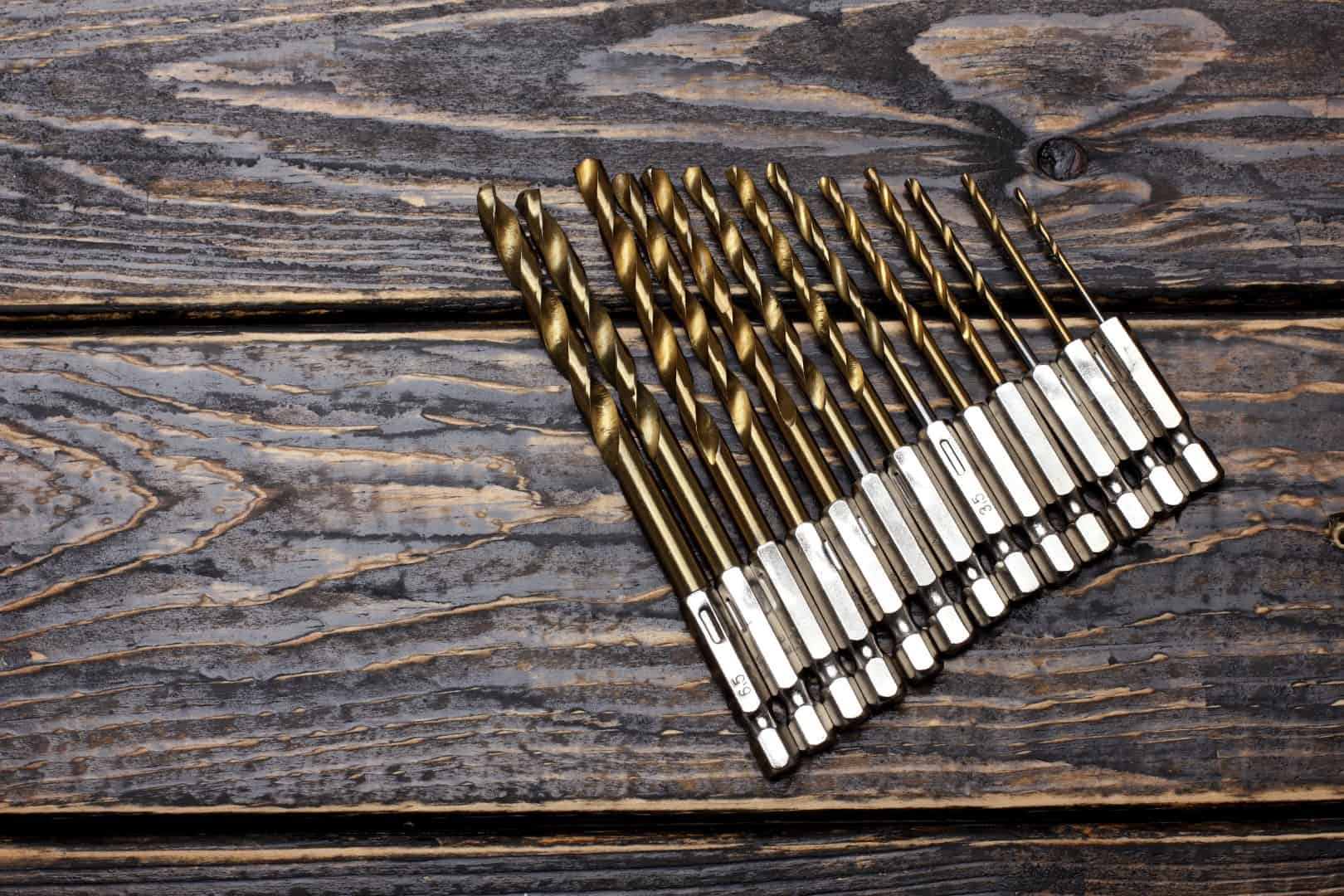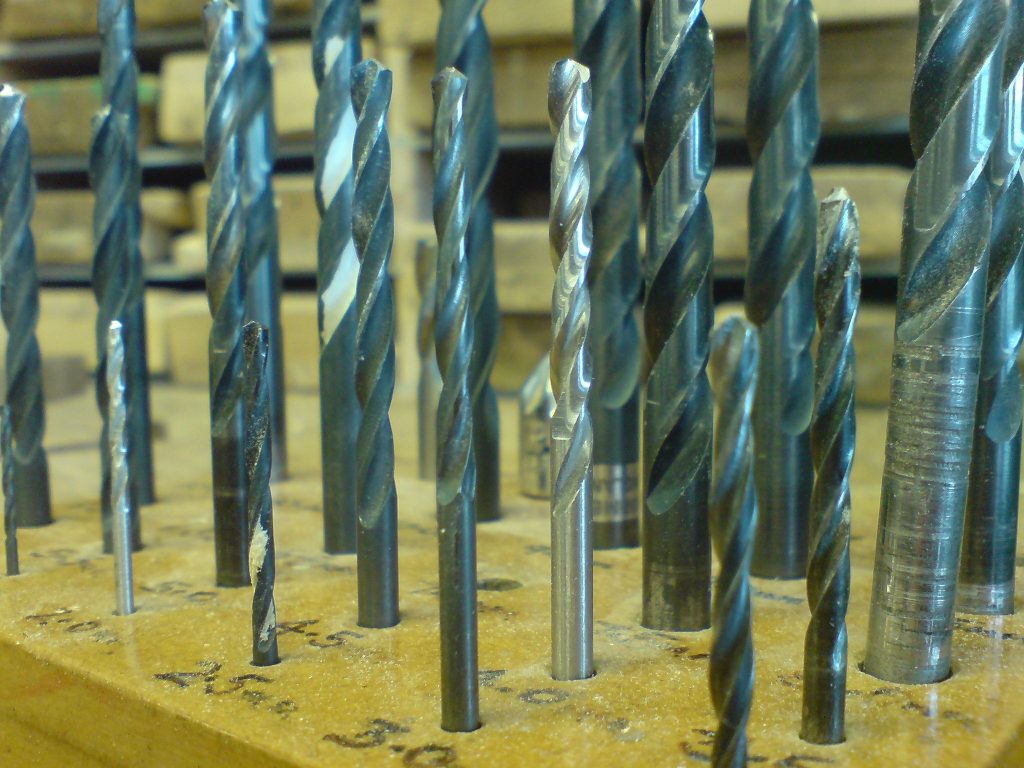Have you ever wondered why drill bits sometimes get stuck in wood? It can be frustrating when you’re in the middle of a project and suddenly your drill bit refuses to budge. Well, you’re not alone! Many DIY enthusiasts and professionals have encountered this issue. But fear not, because in this article, we’ll delve into the reasons behind this problem and explore some practical solutions.
Drilling into wood might seem like a simple task, but there are a few factors that can cause drill bits to get stuck. One common reason is the buildup of heat and friction during the drilling process. As you drill into the wood, the friction between the bit and the material can generate heat, which causes the wood to expand and grip the drill bit tightly.
Another reason drill bits get stuck is due to the type of wood being drilled. Certain woods, like oak or maple, contain dense and hard fibers that can be more challenging to drill through. This increased resistance can cause the drill bit to get stuck or even break if excessive force is applied.
So, what can you do to prevent drill bits from getting stuck in wood? We’ll explore some helpful tips and techniques in the following sections to ensure smooth drilling and avoid frustrating mishaps. Let’s get started!

Why Do Drill Bits Get Stuck in Wood?
Drilling is a common practice when working with wood, whether it’s for construction, crafting, or any other task that involves joining pieces of wood together. However, there are instances when drill bits get stuck in the wood, causing frustration and hindering progress. Understanding the reasons behind this issue can help prevent it from happening and ensure a smooth drilling experience. In this article, we will explore the various factors that contribute to drill bits getting stuck in wood and provide tips on how to avoid this problem.
1. Dull or Damaged Drill Bits:
One of the main reasons why drill bits get stuck in wood is due to their condition. Over time, drill bits can become dull or damaged, resulting in inefficient drilling and increased resistance. Dull drill bits struggle to effectively cut through the wood, causing them to get stuck. Similarly, damaged or chipped drill bits can create uneven or rough holes, increasing the likelihood of getting stuck.
To prevent this issue, regularly inspect your drill bits for any signs of wear or damage. Replace them if necessary, as using dull or damaged bits not only increases the risk of getting stuck but also compromises the quality of your work. Invest in high-quality drill bits made from durable materials, such as carbide or cobalt, to prolong their lifespan and ensure optimal performance.
Additionally, using the correct drill bit size for the desired hole can also prevent sticking. Using a bit that is too small for the hole may cause it to get stuck as it struggles to cut through the wood effectively. On the other hand, using a bit that is too large may result in a loose fit, leading to wobbling or improper positioning.
2. Incorrect Drill Speed:
The speed at which you drill can greatly influence whether the drill bit gets stuck in the wood. When drilling at a high speed, the heat generated from the friction between the bit and the wood can cause the wood to expand, making it more likely for the bit to get stuck. Additionally, drilling too fast can result in reduced control, increasing the chances of the bit veering off course and becoming lodged.
On the other hand, drilling at a very low speed can also cause problems. Slow drilling can create excess friction between the bit and the wood, leading to heat buildup and increased resistance. This can cause the bit to become stuck, especially if it is dull or damaged.
To avoid getting stuck, find the optimal drilling speed for the specific type of wood you are working with. Generally, slower speeds are recommended for denser or harder types of wood, while faster speeds work well for softer woods. Experiment with different speeds and monitor the progress to determine the best speed for your drilling needs.
3. Insufficient Lubrication:
Lubrication plays a crucial role in preventing drill bits from getting stuck in wood. Without sufficient lubrication, the heat generated during drilling can cause the bit to overheat and become stuck. This is especially true when working with hardwoods or treated lumber, which tend to be more prone to causing friction and heat buildup.
Applying a suitable lubricant, such as drilling wax or oil, to the drill bit and the area being drilled can significantly reduce friction and heat. The lubricant acts as a barrier, allowing the drill bit to glide smoothly through the wood, reducing the risk of it getting stuck. Additionally, lubrication can also help prolong the life of the drill bit by reducing wear and tear.
Before starting any drilling project, ensure you have the appropriate lubrication on hand and apply it generously to the drill bit and the surface to be drilled. This will help maintain optimal performance and prevent the bit from getting stuck.
Key Takeaways: Why Do Drill Bits Get Stuck in Wood?
- Drill bits can get stuck in wood if they are dull or worn out.
- If the drill speed is too high, it can cause the bit to get stuck.
- Using excessive force while drilling can lead to bits getting stuck in wood.
- Drilling at an angle instead of straight can cause bits to bind and get stuck.
- Using the wrong type or size of drill bit for the wood can result in it getting stuck.
Frequently Asked Questions
Drill bits can occasionally get stuck in wood for a variety of reasons. Here are some common questions and answers about why this might happen.
1. Why does my drill bit get stuck in wood?
There are a few reasons why a drill bit may get stuck in wood. One possibility is that the wood is too hard or dense for the drill bit to penetrate smoothly. Another reason could be that there is an obstruction within the wood, such as a knot or hidden nail, which causes the bit to become stuck. Additionally, using the wrong type of bit or applying too much pressure while drilling can also lead to the bit getting stuck.
To prevent this, it’s important to choose the right type of drill bit for the job and use a slower drilling speed for harder woods. It can also be helpful to mark any potential obstructions on the wood’s surface before drilling.
2. How can I prevent my drill bit from getting stuck in wood?
To minimize the chances of your drill bit getting stuck in wood, there are a few things you can do. Firstly, choose a drill bit that is appropriate for the type of wood you are working with. Different types of wood require different types of drill bits, so make sure you have the right one for the job.
Additionally, take your time when drilling and use a slower speed for harder woods. Applying excessive pressure can cause the bit to become stuck, so allow the drill to do the work at a steady pace. Lastly, inspect the wood for any potential obstructions or hidden nails that may impede the drilling process.
3. What should I do if my drill bit gets stuck in wood?
If your drill bit becomes stuck in wood, it’s important not to force it or try to yank it out forcefully. This can cause damage to the bit, the drill, or even the wood itself. Instead, try reversing the drill to unscrew the bit from the wood. If this doesn’t work, you can try tapping the bit gently with a hammer to loosen it.
If all else fails, you may have to resort to removing the bit manually. This can be done by carefully using pliers or a pair of vice grips to grasp the shank of the bit and twist it out of the wood. Just be cautious not to damage the bit or injure yourself during the process.
4. Can using the wrong type of drill bit cause it to get stuck in wood?
Yes, using the wrong type of drill bit can increase the chances of it getting stuck in wood. For example, using a wood drill bit when working with metal can cause it to become stuck or break. It’s important to match the drill bit to the material you are working with to ensure optimal performance and prevent the bit from getting stuck.
Always refer to the manufacturer’s guidelines or consult a professional if you are unsure of which type of drill bit to use for a specific material. Using the correct bit not only improves efficiency but also reduces the risk of it getting stuck or damaged.
5. Are there any maintenance tips to prevent drill bits from getting stuck in wood?
Yes, regular maintenance can help prevent drill bits from getting stuck in wood. One important maintenance tip is to keep your drill bits clean and free from debris. Accumulated wood shavings and dust can hinder the drilling process and increase the chances of the bit getting stuck.
Additionally, sharpening your drill bits periodically can improve their cutting abilities and reduce the likelihood of getting stuck in wood. You can use a dedicated drill bit sharpener or consult a professional to ensure your bits are in optimal condition. Taking these simple maintenance steps can greatly extend the lifespan of your drill bits and enhance their performance.

11 DRILLING TIPS AND TRICKS (And Mistakes To Avoid!)
Summary
Sometimes drill bits get stuck in wood because the wood is too hard or moist. To avoid this, use the right type of bit and make sure the wood is dry. Pressing too hard or drilling too fast can also cause the bit to get stuck. If this happens, try backing out the bit slowly to release it.
Another reason for drill bits getting stuck is improper alignment. Make sure the bit is straight and centered before drilling. Lubricating the bit with wax or soap can reduce friction and make it easier to remove. It’s important to be patient and not force the bit, as this can damage both the bit and the wood.
